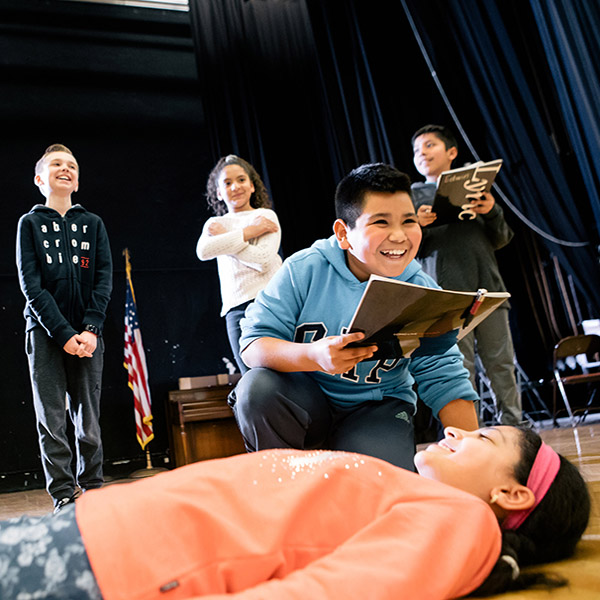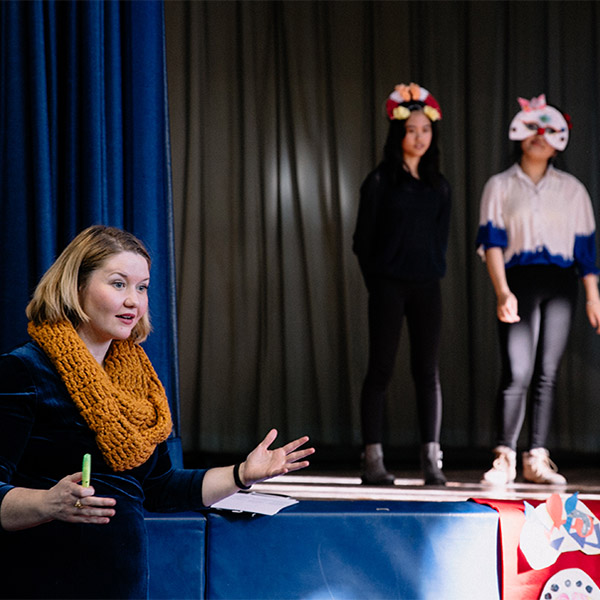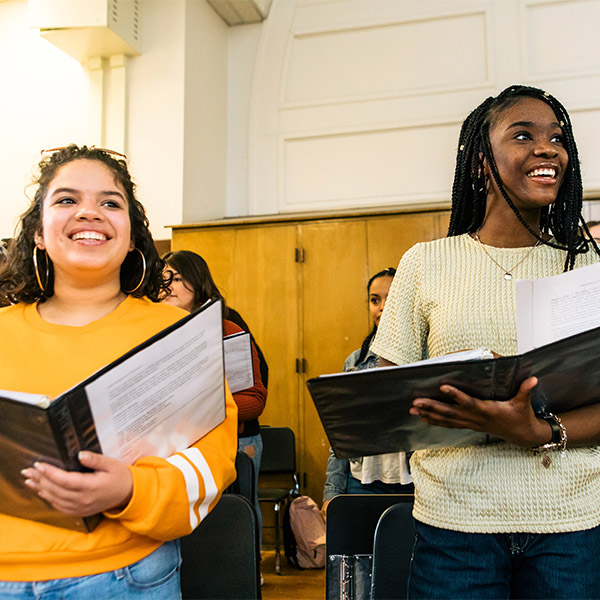

Opera Residencies
Opera Residencies for Schools pair classroom teachers with professional Lyric teaching artists to enrich students’ learning through opera. Programs are available for grades 1-12 and each of our three unique programs are tailored to customized learning objectives and goals identified by teachers.
Through the generosity of Chicago’s philanthropic community, Lyric is able to offer these programs free of charge to a limited number of CPS and Big Shoulders school partners.
Elementary Opera Residency (Grades 1-5)

Elementary Opera Residency (grades 1-5)
The Elementary Opera Residency engages students in grades 1-5 in creating and performing an original opera that integrates learning content objectives with arts learning in music, theater, and movement.
Teachers and Lyric teaching artists work collaboratively to develop a custom residency plan that addresses desired learning outcomes while students participate in creative storytelling through the art of opera.
Teachers determine a session schedule that coordinates with the established class meeting schedule. The program can be implemented any time during the school year.
Opera Residency applications for the 2025/26 school year are closed. Please check back in April of 2026 for the next school year.

Opera Discovery Project (grades 6-12)
Opera Discovery Project engages students in grades 6-12 in the study of opera through activities that integrate language arts, music, drama, and performance skills. Students gain a rich understanding of a selected work, its history and context, and important themes.
Working in collaboration with the classroom teacher, a Lyric teaching artist guides students through a creative process to reinterpret select operatic scenes with their own words and music.
The program includes a field trip to the Lyric Opera House to attend a final dress rehearsal. Teachers determine a session schedule that coordinates with the established class meeting schedule.
Opera Residency applications for the 2025/26 school year are closed. Please check back in April of 2026 for the next school year.
Opera Discovery Project

High School Choir Residency (grades 9-12)
The High School Choir Residency supports vocal instruction in high school (grades 9-12) choir programs by providing regular, year-round assistance from a Lyric professional teaching artist. Teaching artists work collaboratively with choir teachers to deliver student instruction and foster student artistic growth. The program features several integrated components:
- Regular, ongoing music learning support in the choral classroom
- Participation in Lyric's Choral Fest on Thursday, February 12, 2026
- Passes to a final dress rehearsal at Lyric
- Option to integrate an Opera Discovery Project into the High School Choir Residency
Opera Residency applications for the 2025/26 school year are closed. Please check back in April of 2026 for the next school year.
Opera Residencies Sponsors

Opera Residencies for Schools are supported by BMO, Polk Bros. Foundation, Lloyd A. Fry Foundation with major support from the Nancy W. Knowles Student and Family Performances Fund.
Photos: Kyle Flubacker, Jaclyn Simpson